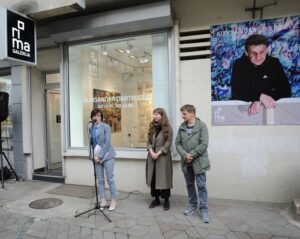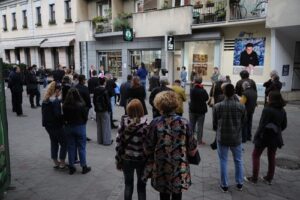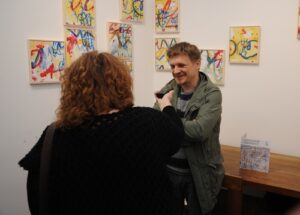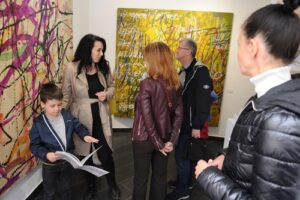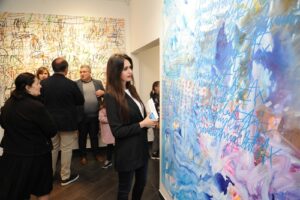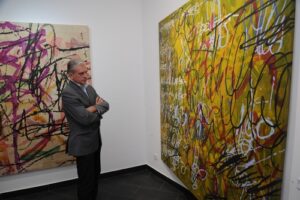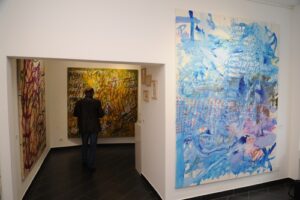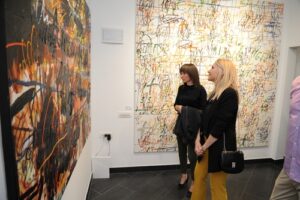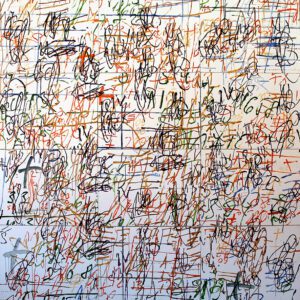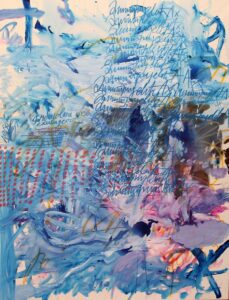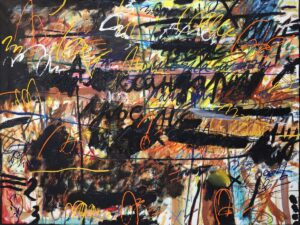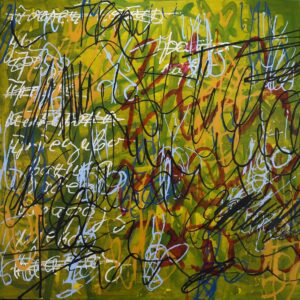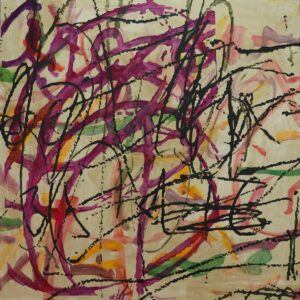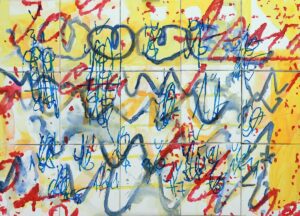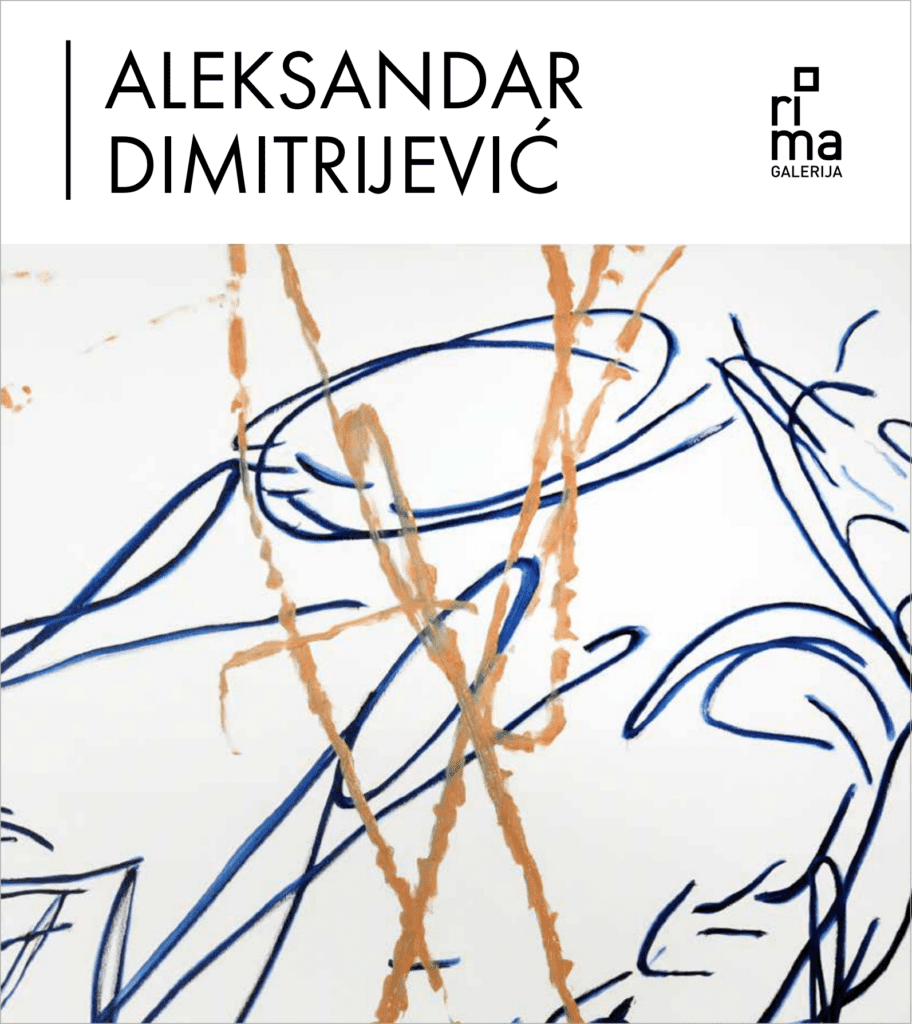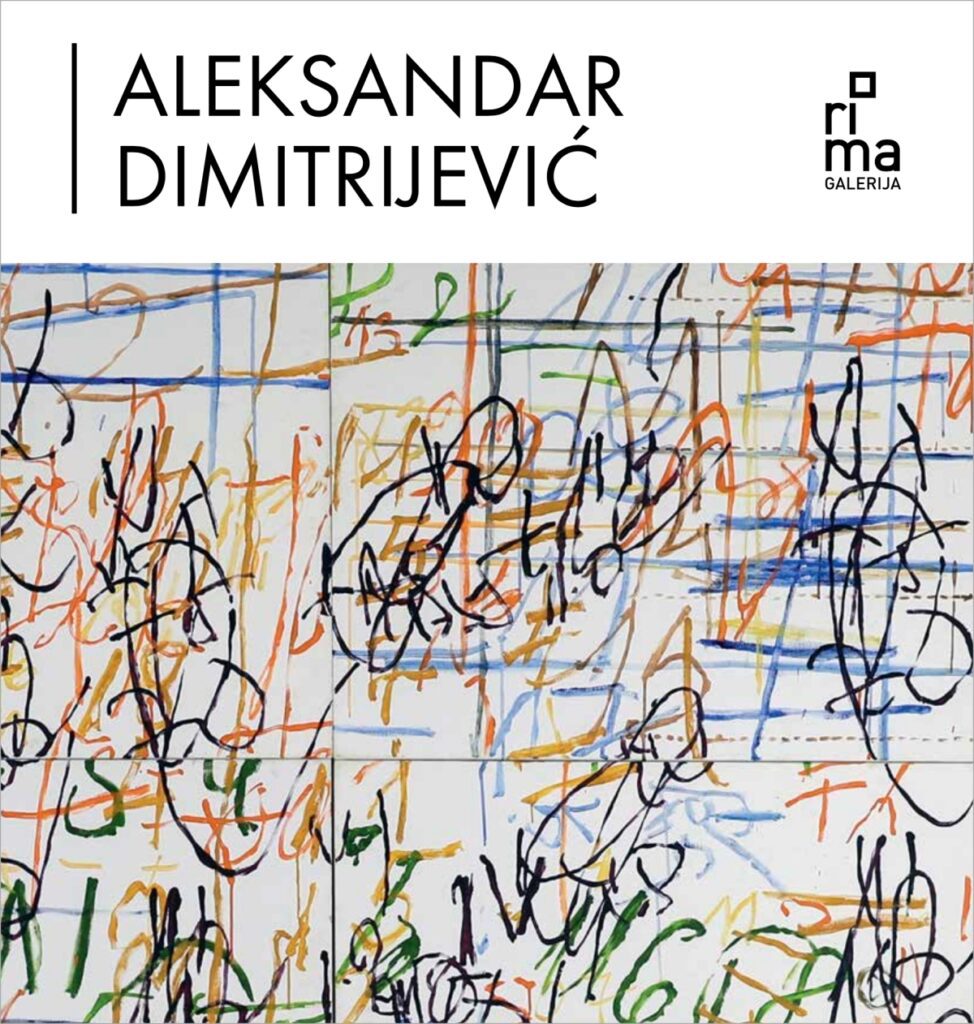Marija Stanković
The Time of Others between the Artist and the Painting
In their initial stage of creation, the paintings of Aleksandar Dimitrijević have their roots as well as their conceptual, formal and structural support in Artefacts, the artist’s collection of found drawings by unknown authors, which simultaneously functions as an integral part of his opus. The artist’s definition of Artefacts as an archive of drawings/collection of documents, reveals his dialectic relationship to that body of works. Drawings, with recorded progress and results of diverse social games and life situations, represent a gathering of related objects; their characteristics and qualities are kept as a separate whole, as open fields where the documentary feature becomes a part of the artist’s everyday and his visual art methodology. All subsequent levels are generated by particular visual interventions that transpose and/or deconstruct in parallel the original documentary quality.
A gradual construction of the visual field of a painting can be interpreted as an artistic procedure essentially related to the appropriation or erasure of time. It has already been emphasised that the paintings of Aleksandar Dimitrijević are imprints of everyday situations, that, among other things, they treat leisure and free time, or study human relationships through social games that serve as the vehicle for killing time. Memorised time and the course of social games in drawings-artefacts belong to somebody else’s time and remembrance, and therefore Dimitrijević’s paintings can be interpreted also as an archive of memory, and his painterly methods as remembering and storing of the same. Although Dimitrijević’s works represent a complex analysis of inter-artistic problems and social reflections to human relationships, one could separate and, if necessary, permeate those distinct entities, Artefacts as an archive and collection or the process of systematisation of somebody else’s time, and cycles of paintings where postmodernist strategy of appropriation manifests the time of others, which is at the same time a trigger for contemplation of the society and the medium and language of painting.
In collecting and systematising these imprints of anonymous life situations, Dimitrijević deftly avoids the paradigm of artist whose inspiration is the product of internal searches or listening to metaphysical truths. The artist is simultaneously a tireless researcher, activist and analyst of contemporary society, his creative processes are founded on Duchamp’s choice of the artist and his decision to make an artwork of a readymade object. In case of Dimitrijević, readymade drawings-artefacts remain intact, his interventions only concern their symbolic potential – their visual appearance is wrenched from them and transposed onto the canvas. With this transposition the artist makes in fact de-territorialisation of somebody else’s time and memory, simultaneously incorporating and consciously forgetting or erasing certain elements. During that process the artist stays in the space of the picture which is beyond any connection with reality and the rules and regulations related only to painting are constantly established.
Dimitrijević’s relationship to time expressed in a non-figurative visual language can be compared to the temporal aspect of abstract painting of Đorđe Ivačković. Although impulsive and rational at the same time, Dimitrijević and Ivačković have had seemingly similar methods but essentially a different relation towards the problems that occupied them. Đorđe Ivačković kept a journal from the very beginning of his painting activity where he recorded all his thoughts about art; later on they grew into serious analyses of the rules and research of abstract painting. While Ivačković’s recordings were the ground for his study of internal rhythm and truths regarding the relationship between the artist and his painting, Dimitrijević also made use from the commencement of his artistic praxis of (other people’s) notes about (interactive) everyday, and thereby he made the time of others spent together, into a connective relationship between himself and the painting. Instead of his signature, Ivačković inscribes/incises on the surface of his canvas date when the picture was produced, and this signature functions as the title of the work. The act of naming his paintings with dates indicates the importance of time and the duration the artist invested in the process of painting incited by the rhythm of his internal state. On the other hand, Dimitrijević makes his signature a constitutive element of his personal hand, integrated into the visual happenings on the surface of the canvas. Paintings of Đorđe Ivačković are produced after the principle of pre-programmed automatism, as a quick artistic demonstration of internal urge, in a short but complex temporal interval filled with creative charge. The paintings of Aleksandar Dimitrijević are produced by a long, expressive process of visual contemplation of the composition by appropriation, transposition and frequent crossing of documentary fragments of two or more drawings-artefacts. While Ivačković keeps the totality of his painting as a reflection of authentic and irreversible personal moment, Dimitrijević paints, erases and paints over, making the execution a procedure and communication with the time from the life of others.
Through such transformations of formal and compositional aspects of his paintings, which progress from imitations of the whiteness in drawings-artefacts and a true transposition of the documentary effect (2003-2004), over complex processes and crossings of different propositions, interventions in the form of painting over and application the author’s signature as a Duchamp-like confirmation of artist’s identity and the work of art (2005-2010), Dimitrijević reaches the end of game (2010-2011). His coloristic experiment dissects the socially organised structure of the picture and after the polyptych Artefacts (2015) the field becomes the playground with different rules and regulations and a dominance of artist’s will over the memory of documentary quality. Lately, his paintings keep confidential data, inaccessible to the observer and sometimes the foothold of drawings-artefacts is annulled during the process of erasure or painting over the visual information in white paint as a metaphor of the paling picture of memory.
The importance of Aleksandar Dimitrijević’s works and his position on the Serbian art scene are reflected in his relationship towards the contemporary moment, which latently but prescriptively, underlines the significance of an active revaluation of the world around us. His conscious, active and keen contemplation of togetherness as the essentially momentous modality of existence, essentially neglected in business-like rhythms of the contemporary world, and the time spent in community, frequently representing the privilege of those who can afford time for themselves, implies the need to preserve or invent new formats of humanistic reality. Alongside an attentive following of social time and togetherness, Dimitrijević has specifically contributed to contemporary abstract expression with his diverse artistic strategies; with his conceptual intersections he pulled abstraction from the historic framework and revalued its place and role in the present moment.
